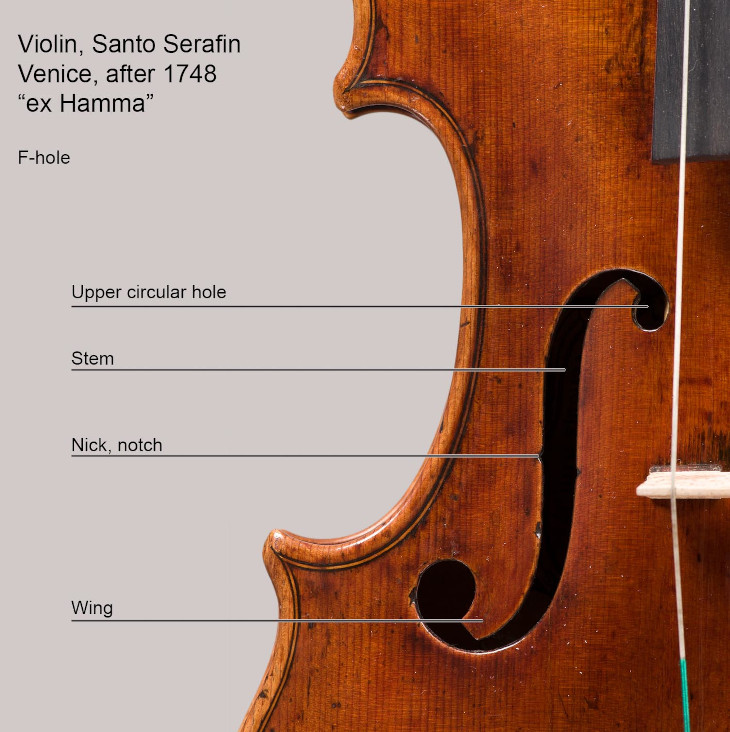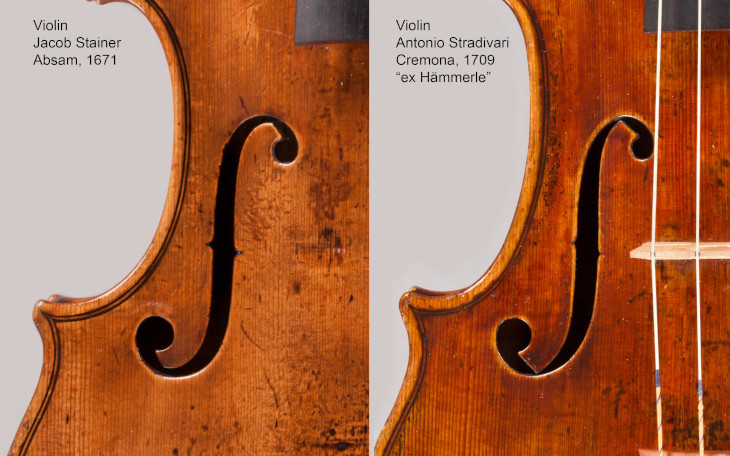F-holes
All string instruments have sound holes to transmit vibrations from the air in the resonance chamber to the outside air. The position, geometry and size of the sound holes determine the vibration characteristics of the belly and thus the sound properties of the instrument. Hence, apart from being aesthetically pleasing, the f-holes satisfy an acoustic function. F-holes have two round or oval eyes at either end (eyes); the two parts on the belly next to the eyes are referred to as wings. The stem is shaped like a cursive f and connects the two eyes. The middle of the stem exhibits two small notches that mark the position of the bridge. In many cases, the cut of the f-holes reflects the master violinmaker’s personal style, so it can be used as a criterion to classify an instrument.


